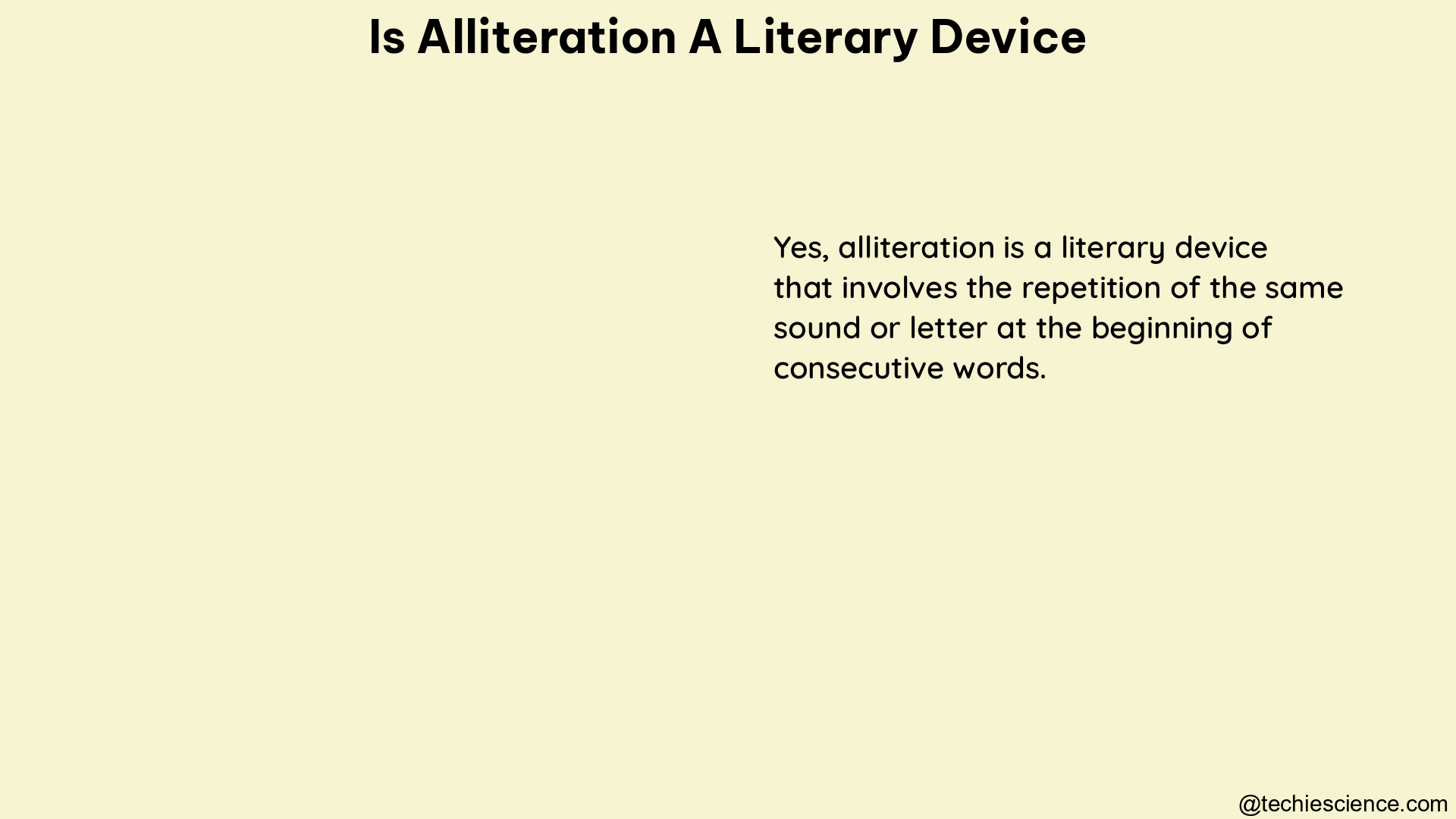Alliteration is a powerful literary device that has been used extensively in poetry, literature, and even in everyday speech. It is a technique that involves the repetition of the same initial consonant sound in words that are in close proximity to one another. This repetition of sounds can create a rhythmic and melodic effect, making the language more memorable and impactful.
Definition and Explanation
Alliteration is a specific type of consonance, which is a broader literary device that involves the repetition of consonant sounds within words. However, alliteration focuses specifically on the repetition of initial consonant sounds in neighboring words or syllables. This repetition can occur at the beginning of words, stressed syllables, or even within words.
The repetition of sounds in alliteration can create a sense of emphasis, musicality, and cohesion within a piece of writing. It can also be used to draw the reader’s attention to specific words or phrases, making them more memorable and impactful.
Examples of Alliteration

- Lord Byron’s “She Walks in Beauty”:
-
“She walks in beauty, like the night / Of cloudless climes and starry skies; / And all that’s best of dark and bright / Meet in her aspect and her eyes;”
-
Robert Frost’s “Birches”:
-
“I’d like to go by climbing a birch tree, / And climb black branches up a snow-white trunk / Toward heaven, till the tree could bear no more, / But dipped its top and set me down again.” This poem features an intense repetition of “b” sounds.
-
John Keats’ “Ode to a Nightingale”:
- “Perhaps the self-same song that found a path / Through the sad heart of Ruth, when, sick for home, / She stood in tears amid the alien corn; / The same that oft-times hath / Charm’d magic casements, opening on the foam / Of perilous seas, in faery lands forlorn.” This passage includes alliterations of both “s” and “f” sounds.
Importance and Uses of Alliteration
Alliteration is commonly used in poetry to create a musical quality and enhance the rhythm of the verse. It can also be used to draw attention to specific phrases or ideas, making them more memorable and impactful. Additionally, alliteration is often employed in literature to evoke certain emotions or moods, as different sounds can create distinct atmospheres.
Here are some of the key reasons why alliteration is an important literary device:
-
Rhythm and Musicality: The repetition of sounds in alliteration can create a rhythmic and melodic effect, making the language more engaging and memorable.
-
Emphasis and Attention: Alliteration can be used to draw the reader’s attention to specific words or phrases, highlighting their importance or significance within the text.
-
Emotional Impact: The choice of consonant sounds in alliteration can evoke specific emotions or moods, such as playfulness, seriousness, or even a sense of mystery or foreboding.
-
Memorability: The repetition of sounds in alliteration can make phrases or sentences more memorable, which can be particularly useful in poetry or advertising.
-
Stylistic Variation: Alliteration can be used to add variety and complexity to a writer’s style, creating a more sophisticated and nuanced literary work.
Techniques and Strategies for Using Alliteration
When using alliteration in your writing, there are several techniques and strategies to consider:
-
Consonant Sound Selection: Choose consonant sounds that are appropriate for the mood, tone, and subject matter of your writing. For example, the repetition of “s” sounds can create a sense of sibilance and mystery, while the repetition of “p” sounds can convey a sense of playfulness or lightness.
-
Placement and Density: Decide where to place the alliterative words within your sentences or lines of poetry. The placement can affect the emphasis and impact of the alliteration. Additionally, the density of alliteration (the number of alliterative words in close proximity) can also impact the overall effect.
-
Variation and Contrast: While alliteration can be a powerful tool, it’s important to use it judiciously and with variation. Overuse of alliteration can become repetitive and distracting. Consider using alliteration in contrast with other literary devices, such as assonance or consonance, to create a more nuanced and balanced effect.
-
Contextual Appropriateness: Ensure that the alliteration you use is appropriate for the genre, tone, and audience of your writing. Alliteration that is too playful or whimsical may not be suitable for a formal academic paper, for example.
-
Experimentation and Practice: As with any literary device, the more you experiment with alliteration and practice using it in your writing, the more comfortable and effective you will become. Explore different consonant sounds, placements, and densities to find what works best for your particular writing style and goals.
Conclusion
Alliteration is a versatile and powerful literary device that can be used to enhance the rhythm, musicality, and memorability of language. By understanding the definition, examples, and techniques of alliteration, writers can effectively incorporate this device into their work to create a more engaging and impactful reading experience.
References
- https://iew.com/support/blog/literary-devices-examining-consonance-alliteration-and-assonance
- https://english.stackexchange.com/questions/468692/what-is-alliteration-actually
- https://liberalarts.oregonstate.edu/wlf/what-alliteration
- https://www.litcharts.com/literary-devices-and-terms/alliteration
- https://literaryterms.net/alliteration/

Hi…. I am Goutam Datta. I have completed a double M. A. in English and B. Ed. I am a creative writer. Currently, I am a part of the LambdaGeeks.